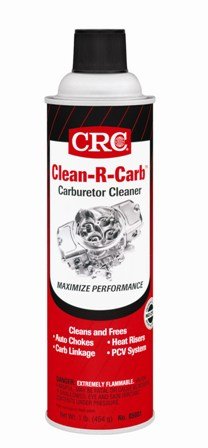REWahoo! will confirm that I'm [-]cheap[/-] more frugal than most, but sometimes I just want to use a tool instead of having to spend all my time maintaining it. It's even more frustrating when you're not particularly looking forward to the use of this particular tool.
Our yard's back slope varies from 6-9 degrees, so I "trim" it with a Ryobi two-stroke 30cc weedwhacker using special [-]spinning wheels of death[/-] Aero-Flex blades. The trick is to have something tough enough to hack through the California grass-- but not accidentally amputate your ankle if you slip and fall on your assets. Much to my surprise, this one has somehow managed to last for four years. The weedwhacker, not my ankle.
A couple weeks ago the engine began running erratically to the point where I couldn't keep it going. I noticed that the fuel tank's (plastic) fuel & return lines were [-]spewing[/-] leaking. I used the $15 rebuild kit to make sure the fuel stays on the inside of the engine (with a brand-new fuel filter), and now it starts up fine.
However it won't stay running. When I have the carburetor's butterfly valve shut (at "full choke" or "start") and pull the cord, the engine starts & runs just fine. When I try to open the throttle after a 10-15 second warmup, its interlock linkage also opens the butterfly valve (to "no choke" or "run"). And then the engine sucks in all that fresh air and immediately shuts down. I'd need three hands to simultaneously adjust the throttle, the butterfly valve, and the cutting end.
The spark plug is clean with the correct 0.025" gap but I'm going to replace that as soon as I pick up another one. Four years is probably past its expiration date.
The fuel mixture is correct-- I buy gas in one-gallon increments and use the right 2.6 oz of two-stroke oil.
The butterfly valve has a small screen over its intake, and that used to have a spongy filter over it. However the filter & cover have been lost for at least a year (they're somewhere in that grass!). If that sponge/cover turn out to be the problem then I'd just buy a new weedwhacker.
The carburetor has only one screw to adjust the idle, but my problem is getting the engine up to full RPMs. I'm not even ready to start thinking about idling.
I'm not dealing with a high-performance machine here, so I'm not expecting to have to grind valves or soak pieces in carburetor cleaner. At that point I'd just go buy another darn weedwhacker. However I'm hoping to figure out what price I'm paying for my ignorance. What am I missing?
In the meantime this cool & rainy weather has produced six-foot-high stalks of "grass". I'm going to have to trim most of it with a pair of pruners and maybe a reciprocating saw...
Our yard's back slope varies from 6-9 degrees, so I "trim" it with a Ryobi two-stroke 30cc weedwhacker using special [-]spinning wheels of death[/-] Aero-Flex blades. The trick is to have something tough enough to hack through the California grass-- but not accidentally amputate your ankle if you slip and fall on your assets. Much to my surprise, this one has somehow managed to last for four years. The weedwhacker, not my ankle.
A couple weeks ago the engine began running erratically to the point where I couldn't keep it going. I noticed that the fuel tank's (plastic) fuel & return lines were [-]spewing[/-] leaking. I used the $15 rebuild kit to make sure the fuel stays on the inside of the engine (with a brand-new fuel filter), and now it starts up fine.
However it won't stay running. When I have the carburetor's butterfly valve shut (at "full choke" or "start") and pull the cord, the engine starts & runs just fine. When I try to open the throttle after a 10-15 second warmup, its interlock linkage also opens the butterfly valve (to "no choke" or "run"). And then the engine sucks in all that fresh air and immediately shuts down. I'd need three hands to simultaneously adjust the throttle, the butterfly valve, and the cutting end.
The spark plug is clean with the correct 0.025" gap but I'm going to replace that as soon as I pick up another one. Four years is probably past its expiration date.
The fuel mixture is correct-- I buy gas in one-gallon increments and use the right 2.6 oz of two-stroke oil.
The butterfly valve has a small screen over its intake, and that used to have a spongy filter over it. However the filter & cover have been lost for at least a year (they're somewhere in that grass!). If that sponge/cover turn out to be the problem then I'd just buy a new weedwhacker.
The carburetor has only one screw to adjust the idle, but my problem is getting the engine up to full RPMs. I'm not even ready to start thinking about idling.
I'm not dealing with a high-performance machine here, so I'm not expecting to have to grind valves or soak pieces in carburetor cleaner. At that point I'd just go buy another darn weedwhacker. However I'm hoping to figure out what price I'm paying for my ignorance. What am I missing?
In the meantime this cool & rainy weather has produced six-foot-high stalks of "grass". I'm going to have to trim most of it with a pair of pruners and maybe a reciprocating saw...

